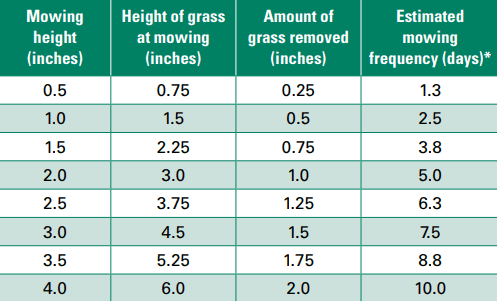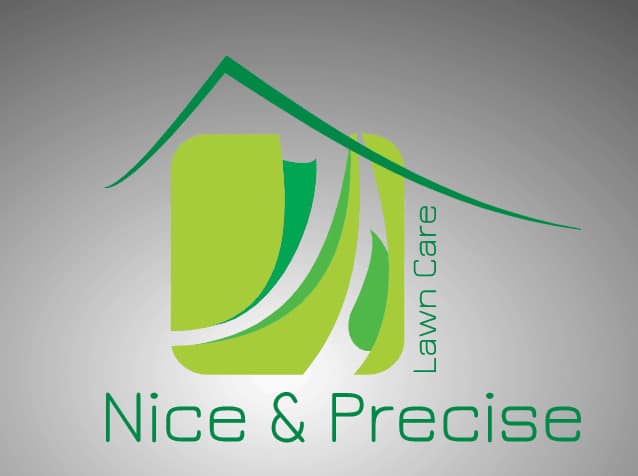Mowing is the most time consuming maintenance
practice related to lawn care, but many aspects of
mowing are misunderstood and performed incorrectly.
Proper mowing practices play a vital role in helping to
maintain a healthy, sustainable home lawn. Lawns often
look attractive after mowing, so it is easy to assume
that grass thrives on mowing. In reality, mowing is a
destructive process that injures the grass plant. Each
mowing temporarily stops root growth, decreases
carbohydrates, increases water loss, decreases water
absorption by the roots, and creates entry routes for
disease. Sound mowing practices help minimize these
stresses. This will answer the most common
questions related to mowing your lawn:
- How often should I mow?
- What is the correct mowing height?
- Should I collect grass clippings?
- How do I stripe my lawn?
- What maintenance does my lawnmower need?
Lawn Mowing Frequency
The frequency of mowing should be based on the
growth of the grass. As a general rule, mow as often as
needed so that no more than one-third of the total leaf
area is removed in a single mowing. For example, if you
maintain a Kentucky bluegrass lawn at a 2-inch height,
the lawn should be mowed when the grass reaches
3 inches.

Removing more than one-third can lead to
scalping which decreases the aesthetic appearance
of the lawn. More importantly, scalping reduces the
reserve carbohydrates within the plants that are used to
re-grow shoots and leaf tissue after mowing. Depleting
the carbohydrates reduces the capability of the grass
plant to withstand environmental stresses.
Shorter mowing heights also require more frequent mowing.
Michael Agnew, former Iowa State extension turfgrass specialist, and
Nick Christians, professor of horticulture.
This is contrary to popular belief but has been proven to be true. A lawn maintained at a 1-inch height would have to be mowed every 2.5 days
to remove only one-third of the above ground tissue,
whereas a lawn maintained at two inches would not
have to be mowed for five days.
When to begin mowing in the spring?
A related topic is when to begin mowing in the spring
and when to stop mowing in the fall. Often, the first
mowing of the spring is helpful to remove dead leaf
tissue on top of the grass canopy. Removing this excess
tissue helps sunlight reach the live grass underneath
and stimulates the lawn to begin actively growing. The
exact date to begin mowing varies and depends on
geographic location, environmental conditions, and the
type of grass species in the lawn. In general, mowing
can begin after the ground has thawed, the grass regains
a green color, and it slowly begins growing. Mowing
should continue into the fall as long as the grass is
actively growing.
We’re happy to help with your lawn care needs, if you would like more information or to request a free no obligation quote please click here.

